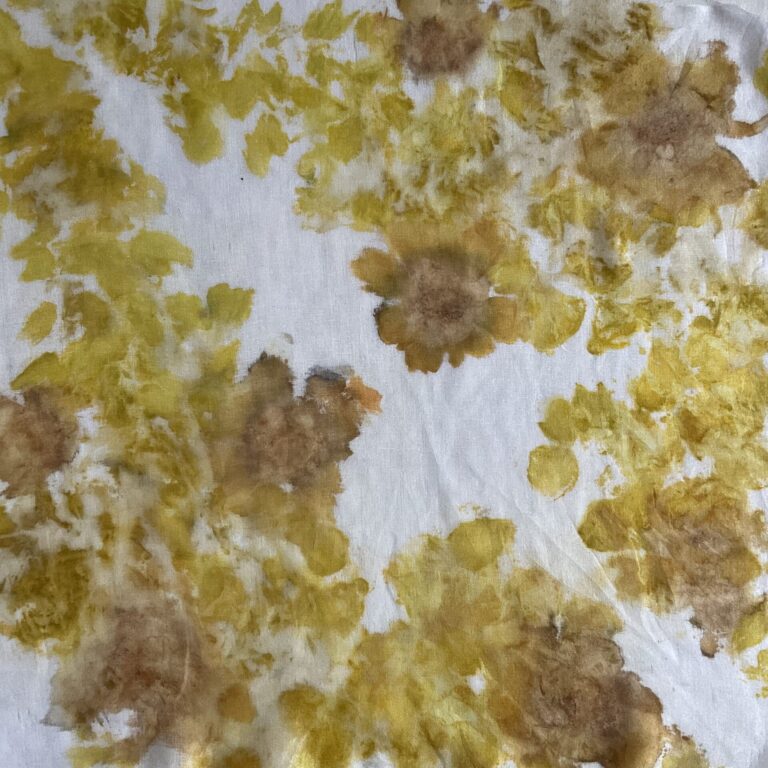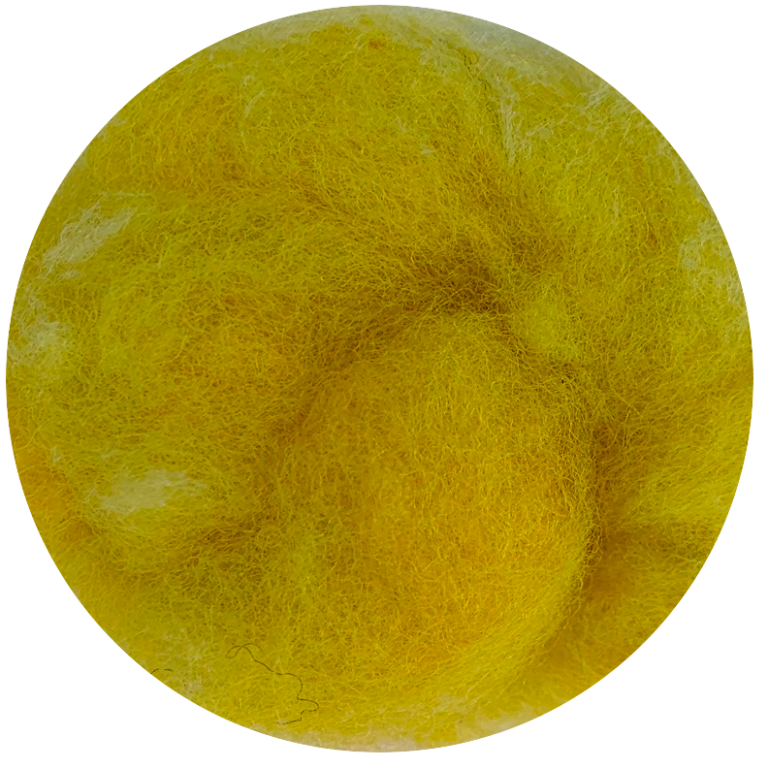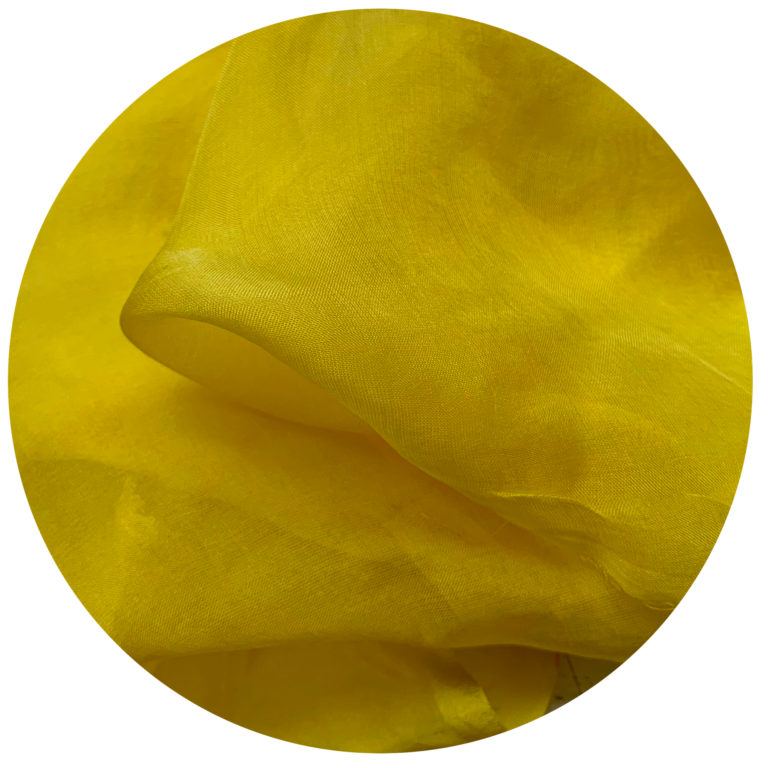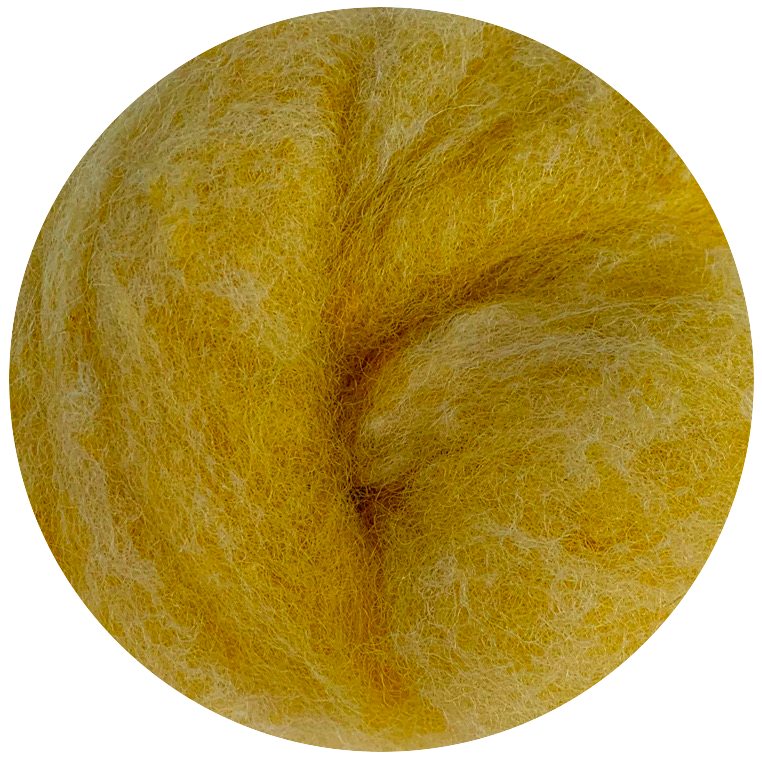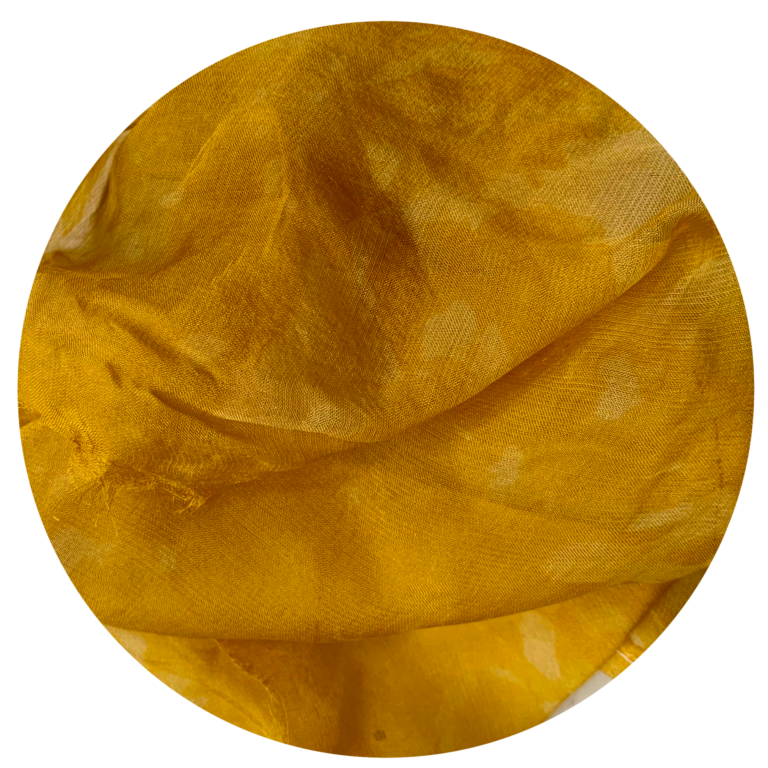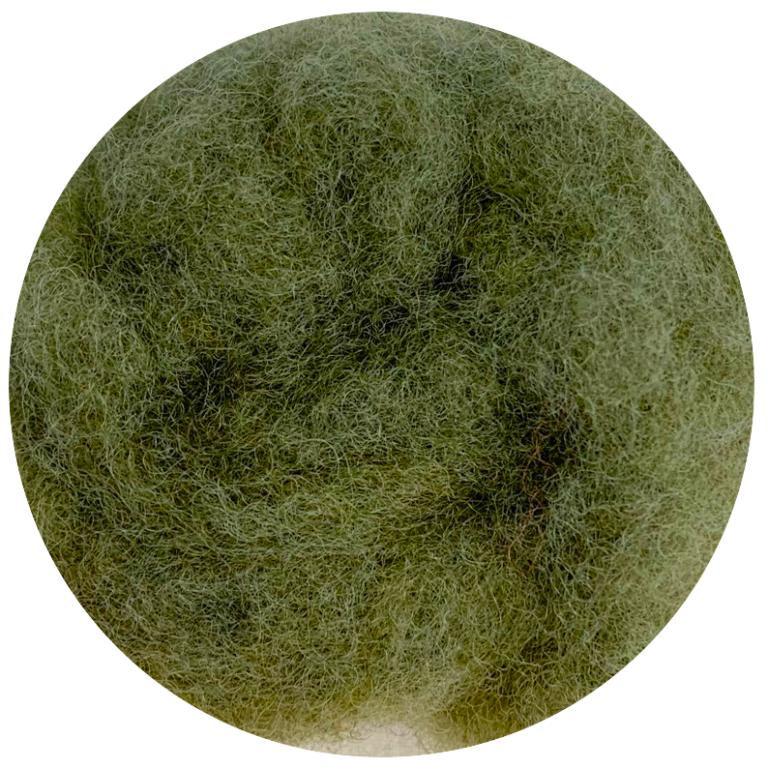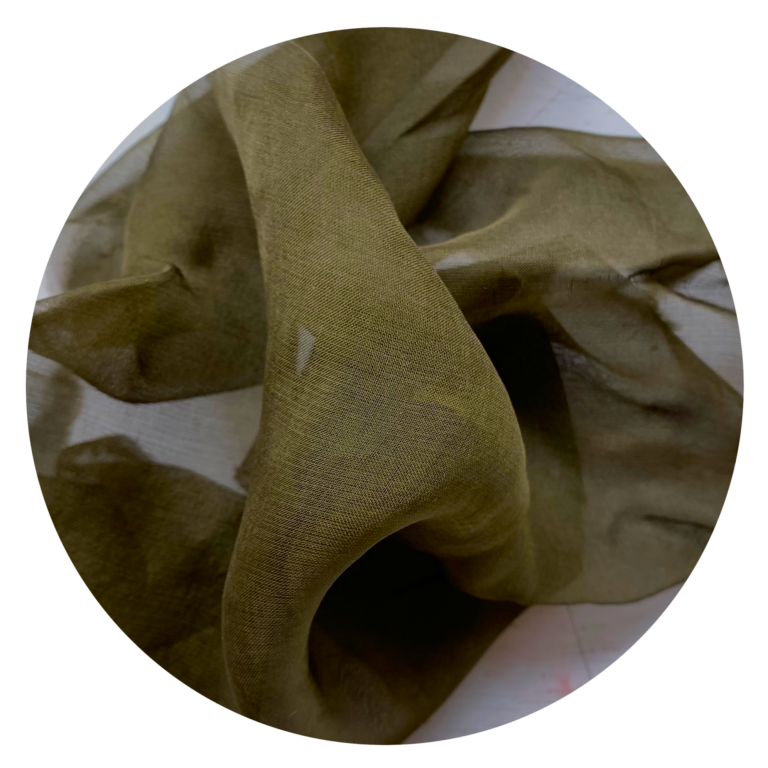dye material: flowers
orange | green | yellow | red
This bright beauty is hard to miss! Tagetes, or marigold, is a flowering plant whose origin brings us to Mexico. The flowering blossoms of golden yellow and orange reflect the colorful potential of this plant. Historically, marigolds are known for yielding vibrant yellow and orange hues and are a popular plant for a multitude of reasons.
It is estimated that the plant was first introduced to Europe in the 1600s. By then, the plant was common in North Africa which is why it is sometimes called African Marigold and ‘afrikaantjes’ in Dutch.
The cultural significance of marigolds reaches around the globe. In Mexico, the bright orange flowers, carrying the Aztec name cempasúchil, are used to decorate altars as the ‘flower of the dead’ for the celebration of Día de los Muertos. It is said that the strong scent and bright color of the flowers help guide the spirits of the dead on this day, and families will often scatter petals to create a path for them. In India, marigolds are similarly ubiquitous during various holidays. They are often tied together into long, bright garlands and are draped for decoration or worn around people’s necks.
Marigold is also a good protector and a great neighbour to have – the flower works as a pesticide in vegetable gardens and can even be used as a mosquito repellent.
When showered in plenty of sunlight, marigolds will bloom continuously throughout the summer. They also keep on giving – if you pinch off flowers, for instance for dyeing, new orange blossoms will pop out.
planting period
late spring / early summer, after the last frost
harvest period
throughout summer and fall
soil
pH 6-7 – but quite easy-going
sun
full sun if possible!
water
once or twice a week in well-drained soil
planting depth
0.6 cm
spacing
15-30 cm
germination
marigolds can be sown directly from seeds or transplanted as seedlings
flower harvest
harvest flowers continuously by pinching off the flowers, thereby making space for new flowers to bloom
seed harvest
after the last flower petals have fallen, the seed pod will begin to mature in the center of the flower head. Some weeks later the seed pod will turn brown and dry, after which it can be carefully plucked from the plant. The seeds are inside the pod.
